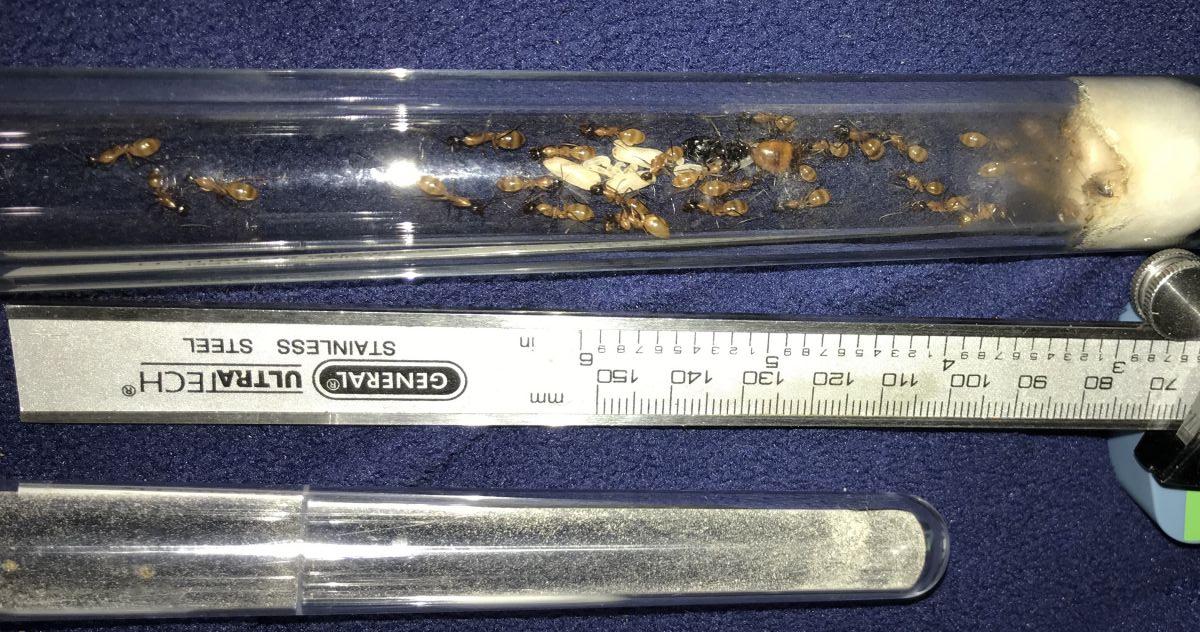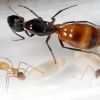Best guess at an ID: Camponotus (Subgenus Tanaemyrmex, New World Group II: picipes-fumidus) sp. Possibly C. semitestaceus
Any suggestions on diet?
Currently feeding honey (50% diluted) and high quality cricket/roach food. They carefully dig / pick thru the roach food and take maybe 30% of the components. They always have food. They violently reject frozen/thawed crickets on several occasions.
Of three 4 fertile queens from last summer, colony sizes vary from 10 to 40 workers. All look fat and healthy. I did not hibernate. They are heated to ~85 to 90 degrees F in the warmest spots with a 7 degree night drop.
Is this a slow growing species or are they underfeed or incorrectly feed?
Wild colonies appear to be small and not yet very active.
Thanks


Edited by Maculata, May 7 2019 - 8:39 PM.
















